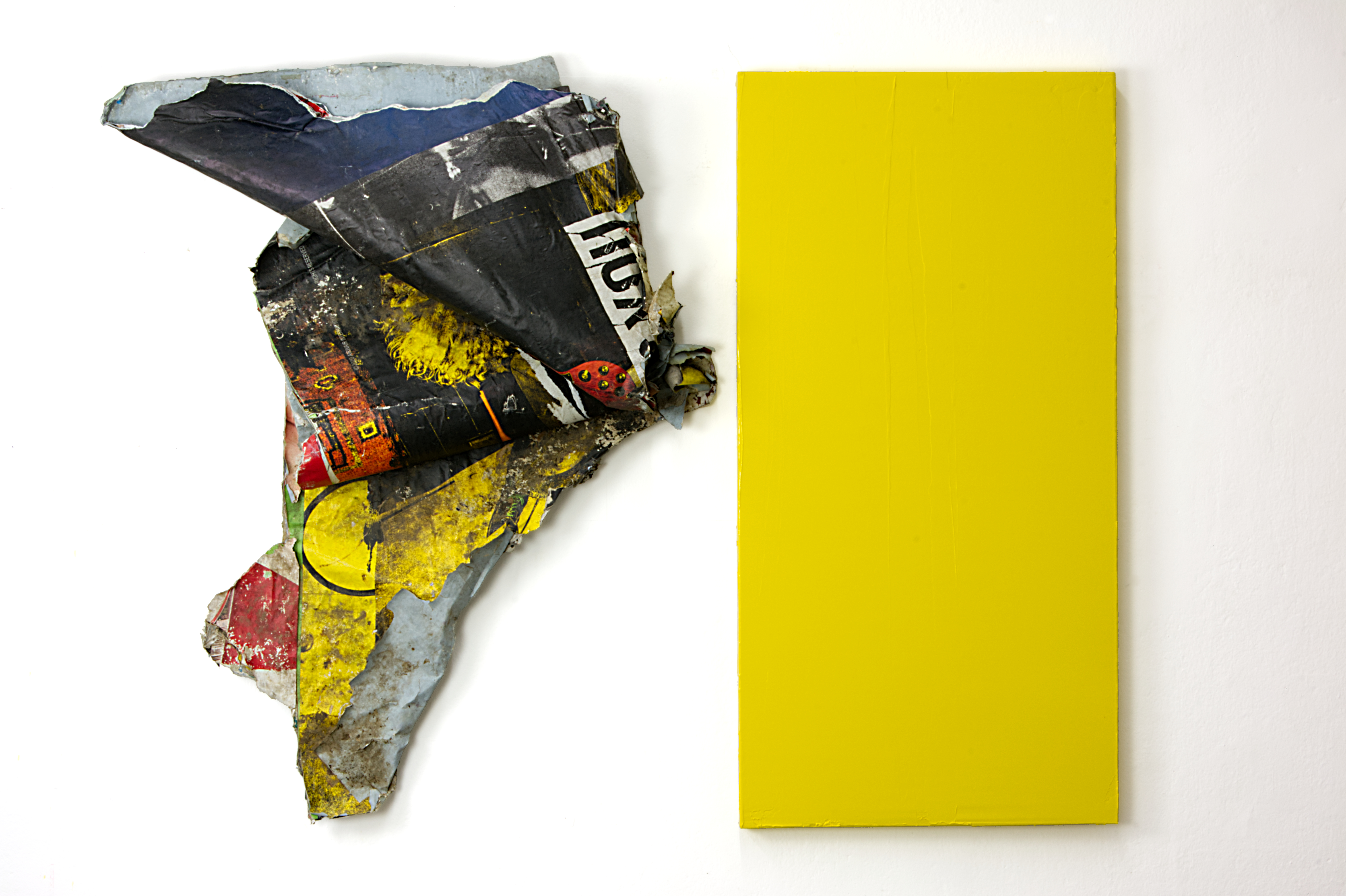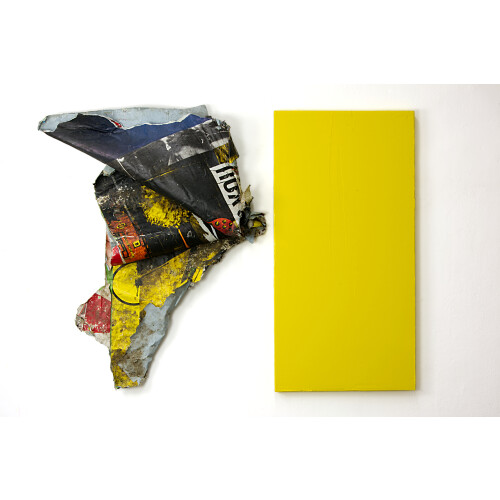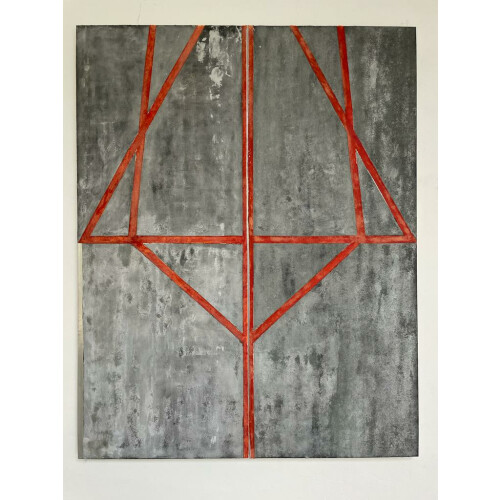Duo solo exhibition - Skins | Ties Ten Bosch & We Will Find It | Jan ten Have
Skins | Ties Ten Bosch
(NL, 1977, lives and works in Berlin)
Ties Ten Bosch is a conceptual artist using layers of advertisement posters from the urban environment as a core material for his current projects. These posters are recreated into the ideological and sculptural matter, embodying social comments with a pleasant humorous tone.
A uniting characteristic of the “skins of Berlin” series is combining a poster piece with a monochrome work into a single diptych. The artistic consolidation of these two very different aesthetical presences unravels an engaging orbit of visual experiences and metaphors. The inherent contrasts between the materials, their origin and the expectations related to their hierarchy in the art world are melting through the careful collusion of their colors and shapes. It is as if these two characters, so different in nature, have achieved a secret agreement that enchants each of them through the presence of the other.
On top of this optical surface, the “skins of Berlin” diptychs immerses you in the space of meaning – often constructed through delicately humorous anecdotes deriving from the text and images, displayed on the posters’ surface, the intentional manipulation of these and the correlation of the artist’s interventions with the title of his works. This perceptive and playful approach sounds best when one feels the frail balance achieved between the aesthetics and the concept – morphing into a series of artworks where the head, heart, and hand recognize each other as vital actors with a shared mission.
- Radoslav Mehandzhiyski, curator

Exhibition Guide Ties Ten Bosch
Link to Ties Ten Bosch artist page
We Will Find It | Jan ten Have
(NL, 1957)
They are ready. Nice smelling. Twenty paintings with a discovery in them. The result is a kind of progress through regression. Which is not about taking a step back, but about breaking free from the structure. To not only avoid any kind of technical routine, but also to get rid of my own background.
Glass is a means to this end. Just like paint. It is no more than a tool. All that matters is how it is applied. How it eventually dissolves with the image and the other means as something completely self-evident. And now that I think about it, I can safely say that technically they clash in such a way that they create a whole new, pictorial reality. And in that I learn with the means. That's how I keep the tension on. I paint in the crash. Dead, but alive in a style that wipes the floor with everything that relies on repetition.
Making a painting is much more complex than losing identity in an image. Because the reflection is not in the surface of the source, but in the painting. So something still needs to be done. And the latter makes painting a strange experience. Because the deeper the painter, like Narcissus, dives into the source, the more his identity loosens, slowly disappears beneath the surface, and dies there in the paint. But ripe for a new metamorphosis. To continue immediately as a kind of Wile E. Coyote
What remains is a solidly constructed object hanging on the wall, as the best commentary on the current state of affairs. A good painting is a failed accident, à la Ballard2, in which the crash causes a dream reality, from which the person who dares it comes out alarmed, because it is not one of the things that can be understood.
- Jan ten Have

Exhibition guide We Will Find It
Link to Jan ten Have artist page



